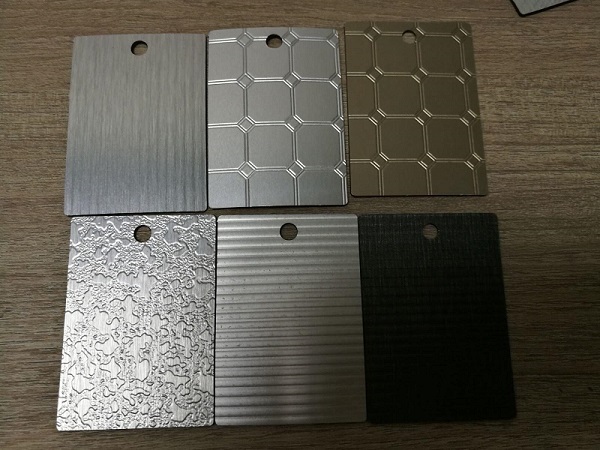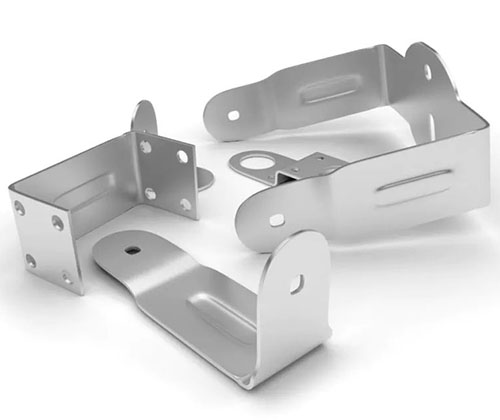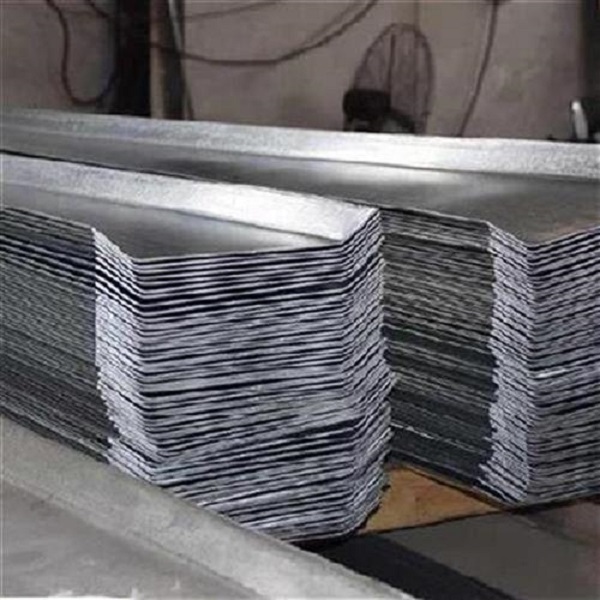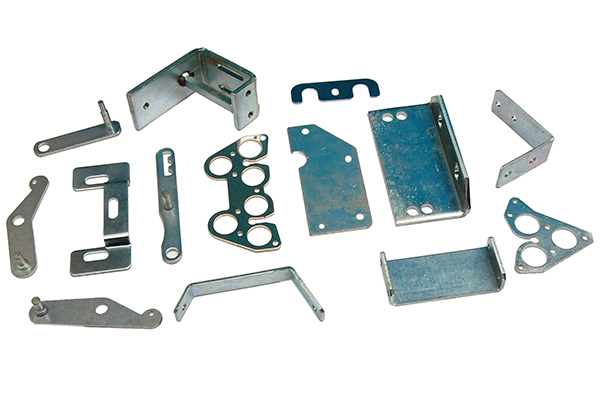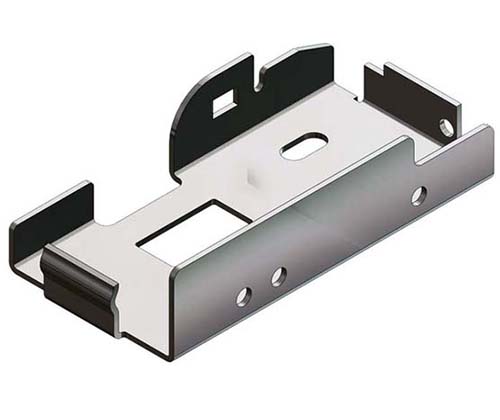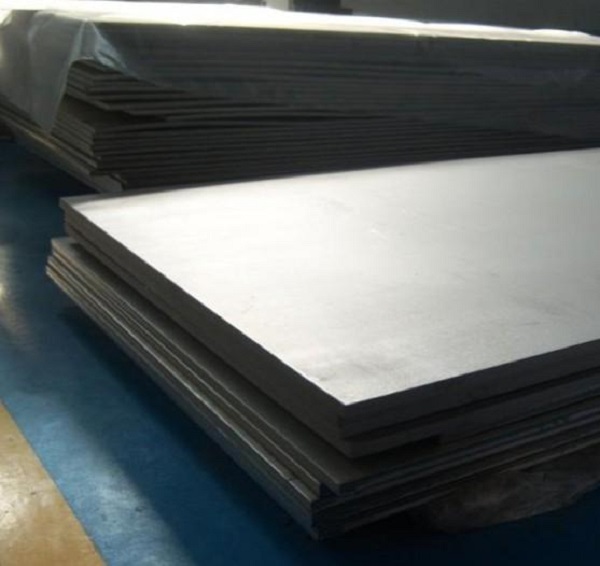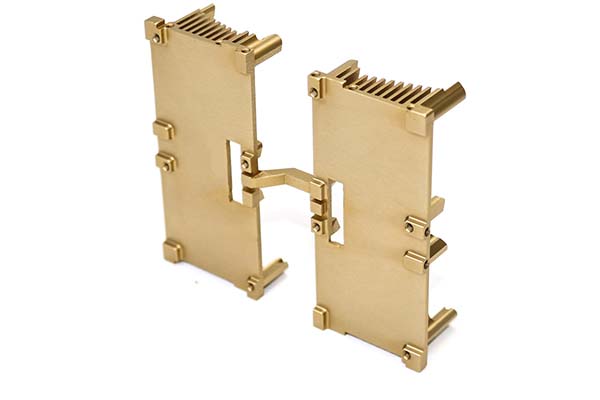What is Aluminum Sheet Metal?
Aluminum sheet metal is a type of thin - plate material made by processing aluminum ingots through a series of procedures. These procedures typically include casting the aluminum ingots into slabs first, followed by hot rolling and cold rolling processes to reduce the thickness of the slabs to the desired dimensions. The final product is a flat, thin sheet of aluminum with a consistent thickness.
Aluminum sheet metal comes in a wide range of thicknesses, usually from a few millimeters down to extremely thin foils. The thickness is a crucial factor that determines its applications. For example, thinner sheets are often used in packaging, such as aluminum foil for food wrapping, due to their flexibility and light - weight nature. Thicker sheets, on the other hand, are more suitable for structural applications where strength is required, like in the automotive and aerospace industries.
It has a silver - white luster in its natural state, which can be further enhanced or modified through surface treatment processes. The density of aluminum sheet metal is approximately 2.7 g/cm³, which is about one - third that of steel. This low density makes it an ideal choice for applications where weight reduction is a priority, without sacrificing too much on strength.
This material has found its way into a vast number of industries. In the automotive industry, aluminum sheet metal is used in body panels, engine components, and interior parts. For instance, many modern cars use aluminum sheet metal for their hoods and doors to reduce the vehicle's overall weight, which in turn improves fuel efficiency. In the aerospace industry, it is a staple material for aircraft fuselages, wings, and various structural components. Its high strength - to - weight ratio makes it perfect for applications where minimizing weight while maintaining structural integrity is essential for flight performance. Additionally, in the construction industry, aluminum sheet metal is used for roofing, siding, and decorative elements, offering durability, corrosion resistance, and an aesthetically pleasing appearance.
Types of Aluminum Sheet Metal
Aluminum sheet metal comes in various series, each with its own unique set of properties and applications. Understanding these different types can help you make the most suitable choice for your specific project.
1100 Series
The 1100 series aluminum sheet metal is known for its high purity, with an aluminum content of around 99%. This high purity contributes to its excellent formability, allowing it to be easily shaped into different forms through processes like rolling, stamping, and bending. For example, in the food packaging industry, 1100 series aluminum sheets are often used to make aluminum foil due to their malleability and non - toxicity, ensuring the safety of food products. In the chemical industry, it is used in the construction of some chemical equipment that requires good corrosion resistance and formability for components such as storage tanks and pipelines for non - aggressive chemicals.
3003 Series
The 3003 series aluminum sheet metal has manganese added to the aluminum base. This addition increases its strength compared to pure aluminum. It has a tensile strength in the range of 110 - 160 MPa in the annealed state, which is about 10 - 20% higher than 1100 series in a similar state. Its corrosion resistance is also enhanced, especially in environments with moisture. In the construction industry, it is used for building facades, roofing sheets, and gutters. For instance, many modern commercial buildings use 3003 series aluminum sheets for their exterior cladding, as it can withstand the outdoor elements for long periods. In the automotive interior, it is used for parts like dashboard frames and door panels, providing a balance of strength and light - weight characteristics.
5052 Series
The 5052 series aluminum sheet metal contains magnesium as the main alloying element. This gives it a relatively high strength, with a tensile strength ranging from 170 - 305 MPa depending on the temper condition. It also has excellent fatigue resistance, which is crucial for applications where the material is subjected to repeated stress. In shipbuilding, 5052 series aluminum sheets are used for the construction of hulls and decking. Since ships are constantly exposed to seawater, the high corrosion resistance of 5052 series, along with its strength, makes it an ideal choice. It is also used in the manufacturing of pressure vessels, such as those used in the oil and gas industry for storing and transporting fluids under pressure.
6061 Series
The 6061 series aluminum sheet metal has silicon and magnesium added. It offers a combination of high strength, good machinability, and excellent weldability. Its tensile strength can reach up to 310 MPa in the T6 temper condition. In the aerospace industry, 6061 series aluminum sheets are used for aircraft components like wing spars and fuselage frames. Its high strength - to - weight ratio and good fatigue resistance are vital for ensuring the structural integrity of the aircraft during flight. In the mechanical manufacturing industry, it is used for making parts such as machine tool frames, gears, and shafts, where high strength and good machinability are required for precision manufacturing.
Applications of Aluminum Sheet Metal
Aluminum sheet metal's versatility has led to its widespread use across multiple industries. Its unique properties make it an ideal choice for a variety of applications.
Aerospace Industry
In the aerospace industry, aluminum sheet metal is of utmost importance. Aircraft manufacturers extensively use it for manufacturing crucial components such as the aircraft fuselage, wings, and engine parts. For example, the Boeing 787 Dreamliner uses a significant amount of aluminum sheet metal in its structure. The use of aluminum sheet metal in these applications is mainly due to its high strength - to - weight ratio. By using aluminum sheet metal, the weight of the aircraft can be significantly reduced. A lighter aircraft requires less fuel to operate, which in turn improves fuel efficiency. According to industry data, for every 10% reduction in aircraft weight, fuel consumption can be decreased by about 6 - 8%. This not only reduces operating costs for airlines but also helps in reducing carbon emissions, making air travel more environmentally friendly.
Automotive Industry
The automotive industry also benefits greatly from aluminum sheet metal. It is used in body panels like the hood, doors, and fenders, as well as in engine components such as cylinder heads and engine blocks. For instance, many luxury car brands, like Audi, have been increasingly using aluminum sheet metal in their vehicle designs. The use of aluminum sheet metal in cars helps in reducing the overall vehicle weight. A lighter vehicle has better acceleration, braking, and handling performance. Additionally, it contributes to a reduction in fuel consumption and a decrease in harmful 尾气排放. Studies have shown that reducing the vehicle weight by 100 kg can lead to a 6 - 8% reduction in fuel consumption and a proportional decrease in carbon dioxide emissions.
Construction Industry
In the construction industry, aluminum sheet metal has a wide range of applications. It is used for roofing, wall cladding, and curtain walls. For example, in many modern commercial buildings, aluminum sheet metal is used to create sleek and modern - looking facades. One of the main advantages of using aluminum sheet metal in construction is its aesthetic appeal. It can be easily finished in different colors and textures to match the design requirements of any building project. It is also highly durable, with a long lifespan. Aluminum sheet metal is resistant to corrosion, which is especially important for outdoor applications. It can withstand harsh weather conditions, including rain, snow, and strong winds. Moreover, it is easy to fabricate and install, which can save time and cost during the construction process.
Electronics Industry
In the electronics industry, aluminum sheet metal is used for manufacturing the outer casings of electronic devices such as laptops, tablets, and smartphones. For example, Apple uses aluminum sheet metal in the design of its MacBook series. The aluminum sheet metal provides a sturdy and protective enclosure for the internal components of these devices. It also helps in dissipating heat generated by the electronic components during operation. Efficient heat dissipation is crucial for maintaining the performance and longevity of electronic devices. If the internal components overheat, it can lead to reduced performance, system crashes, and even permanent damage to the device. Aluminum sheet metal's good thermal conductivity makes it an excellent choice for heat - sink applications in electronics.
Yigu Technology's Viewpoint
As a non - standard plastic metal products custom supplier, Yigu Technology highly values aluminum sheet metal in its custom - made products. One of the significant advantages of aluminum sheet metal is its high customization flexibility. We can customize aluminum sheet metal into different specifications and shapes according to the specific needs of customers. For example, when manufacturing custom - made electronic device enclosures, we can precisely cut and bend aluminum sheets to fit the unique internal component layouts.
During the processing of aluminum sheet metal, some precautions must be taken. First, in the cutting process, appropriate cutting tools should be selected. For instance, high - speed steel or carbide - tipped saw blades are often used to ensure smooth cutting edges and minimize burrs. Second, when bending aluminum sheet metal, the bending radius needs to be carefully calculated. If the bending radius is too small, it may cause cracks in the aluminum sheet. Finally, surface treatment is also crucial. Whether it is anodizing, powder coating, or painting, the right surface treatment can not only enhance the corrosion resistance of aluminum sheet metal but also improve its aesthetic appearance, meeting the diverse requirements of different customers.
FAQ about Aluminum Sheet Metal
What are the common thicknesses of aluminum sheet metal?
Common thicknesses of aluminum sheet metal typically range from as thin as 0.006 inches (about 0.15 mm) for aluminum foils used in packaging and some electrical applications, to 0.5 inches (about 12.7 mm) or even thicker for heavy - duty structural applications. Thinner sheets around 0.01 - 0.03 inches (0.25 - 0.76 mm) are often used in making cans, small electronic enclosures, and decorative trims. Medium - thickness sheets, around 0.06 - 0.2 inches (1.5 - 5 mm), are suitable for automotive body panels, some industrial equipment covers, and building fascia. Thicker sheets, above 0.2 inches, are used in aerospace structural components, large - scale machinery parts, and shipbuilding hulls.
How to distinguish the quality of aluminum sheet metal?
To distinguish the quality of aluminum sheet metal, several aspects can be considered. First, check the surface quality. A high - quality aluminum sheet should have a smooth surface without obvious scratches, dents, or pits. Second, test the hardness. You can use a simple hardness - testing tool like a Rockwell hardness tester. For example, 6061 - T6 aluminum sheet metal should have a certain hardness range, and if it's too soft or too hard compared to the standard, it may indicate quality issues. Third, analyze the chemical composition. Professional methods such as spectroscopy can be used to ensure that the aluminum sheet contains the correct proportion of alloying elements as per the specified series. For instance, a 3003 series aluminum sheet should have the appropriate amount of manganese within the standard range.
Can aluminum sheet metal be recycled?
Yes, aluminum sheet metal is highly recyclable. Recycling aluminum sheet metal is of great significance. It saves a large amount of energy. According to statistics, recycling aluminum requires only about 5% of the energy needed to produce new aluminum from bauxite ore. The recycling process generally involves collecting the used aluminum sheet metal, sorting it by type and purity, melting it in a furnace at high temperatures to remove impurities, and then casting the molten aluminum into new ingots or directly into semi - finished products through processes like rolling or extrusion. This recycled aluminum can be used again in various industries, reducing the demand for virgin aluminum production and minimizing environmental impact.
